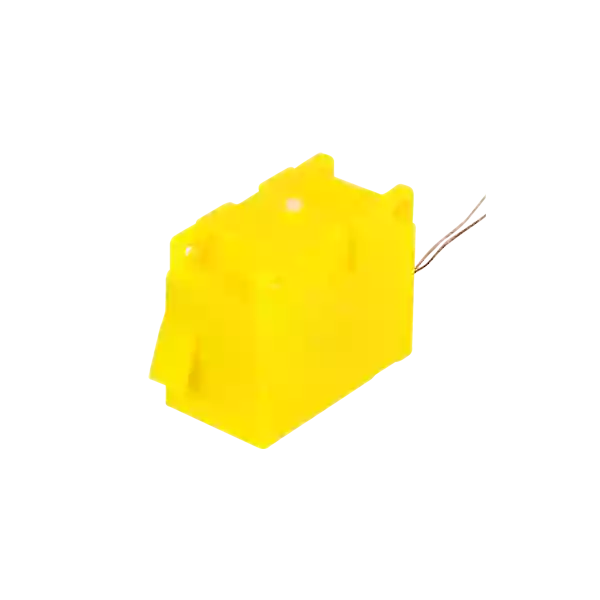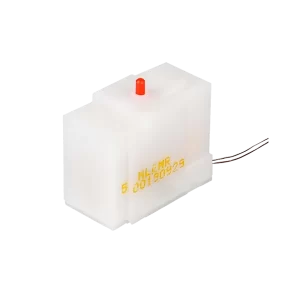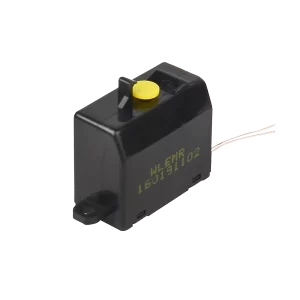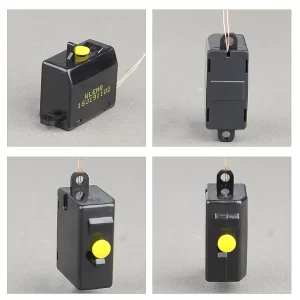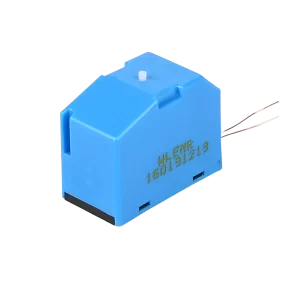Low-voltage circuit breakers consist of several components, including the contact system, arc extinguishing device, operating mechanism, trip unit, frame, and enclosure. During operation, the main contacts are closed by the operating handle, and the trip-free mechanism locks the main contacts in the closed position, while various trip units enter the operating state.
So, what is the role of the trip unit?
The trip unit is a device connected to or integrated into the circuit breaker, which releases the holding mechanism and automatically or manually disconnects the circuit breaker. Generally, traditional bimetallic strip thermal trip units and snap-action or solenoid trip units are mechanical trip units, forming an integral part with the conductive portion of the product.
Electronic electromagnetic trip units are emerging trip units in recent years, leading to the development of numerous intelligent products. They are less affected by environmental temperature, offer higher reliability, and allow for setting more parameters to meet different usage requirements.
The above-mentioned are all overcurrent trip units for circuit breakers. In addition, there are commonly used undervoltage trip units and shunt trip units. As the core component of low-voltage circuit breakers, trip units have different classifications, each with its own functions and operating principles. Let me explain in detail:
Classification and Operating Principles of Disconnector
A disconnector refers to a device that is mechanically connected to a circuit breaker (or forms an integral part) and is used to release the holding mechanism and automatically disconnect the circuit breaker. There are four types of disconnectors within the circuit breaker, namely, magnetic disconnector, thermal disconnector, shunt disconnector, and undervoltage disconnector.
Thermal Disconnector
A thermal-magnetic disconnector provides both magnetic protection and thermal protection, where thermal protection refers to overload protection, characterized by a long delay L curve.
Thermal Protection:
When the current passes through the disconnector, the thermal element generates heat (directly heating the bimetallic strip in direct heating current). The bimetallic strip undergoes thermal deformation, and when it reaches a certain degree of deformation, it pushes the pull rod to rotate, thereby driving the mechanism to act and disconnect the circuit.
The principle of thermal disconnection:
When an overload occurs, the current is relatively low, and it cannot be disconnected by relying on the magnetic disconnector alone. In such cases, the thermal disconnector is utilized.
The main component in the thermal disconnector is the bimetallic strip, usually composed of two different metals or metal alloys. Metals or metal alloys have a characteristic: Different metals or metal alloys have inconsistent volume changes when heated. Therefore, when they are heated, the bimetallic strip composed of two different material metals or alloys will bend toward the side with a lower expansion coefficient, utilizing the degree of bending to drive the disconnector rod to rotate, perform the disconnection and tripping action, and thus achieve overload protection. As overload protection is achieved through thermal effects, it is also known as a thermal disconnector.
When the conductor’s heating is insufficient, an electric heating wire is wound on the bimetallic strip. The greater the current in the main circuit, the greater the heat generated by the electric heating wire, and the greater and faster the deformation of the bimetallic strip.
Electromagnetic Disconnector
Electromagnetic disconnector is commonly used for short-circuit protection, characterized by short-delay S protection and instantaneous I protection.
The electromagnetic disconnector is essentially a magnetic circuit. Under normal current flow in the circuit, the electromagnetic force generated by the electromagnet is smaller than the tension of the spring, resulting in a counterforce that prevents the armature from being attracted by the electromagnet. The circuit breaker operates normally. However, when a short-circuit fault occurs in the circuit, the current exceeds several times the normal current, and the electromagnetic force generated by the electromagnet becomes greater than the counterforce of the spring. As a result, the armature is attracted by the electromagnet, and through the transmission mechanism, it releases the main contact using the free-release mechanism.
The main contact is separated and the circuit is disconnected, providing short-circuit protection. The magnetic disconnector of the circuit breaker is essentially an electromagnet device, consisting of a coil and an armature or core within the coil. When a short-circuit current flows, the coil is energized, causing the armature or core to move rapidly (translation or rotation), altering the balance system of the circuit breaker’s closing lever. Under the action of the stored energy spring, the circuit breaker trips. As for when the overcurrent disconnector operates to protect the current flow, it depends on the type of overcurrent disconnector installed in the circuit breaker. Various protections such as overcurrent, short-circuit, and others can be installed. Once these protective devices detect that the current in the circuit exceeds the protection range, the disconnector enters the operational state, causing the circuit breaker to trip.
Snap-in release
Solenoid release
Undervoltage Disconnector
The undervoltage disconnector is used for undervoltage protection in the main circuit. It refers to a relay or disconnector that opens or closes a mechanical switch with a delay or without delay when the terminal voltage of the relay or disconnector drops to a predetermined value.
-
When the line voltage is normal, the undervoltage disconnector 11 generates sufficient suction force to overcome the tension of the spring 9, causing the armature 10 to engage. Only when the armature is engaged and locked with the hook can the main contacts be closed.
-
When the voltage on the line disappears completely or drops to a certain value, the suction force of the undervoltage disconnector decreases or disappears. The spring 9 pulls the armature away, causing it to impact the lever and disconnecting the main power supply.
-
Similarly, in the absence of power voltage or when the voltage is too low, the automatic air switch cannot connect the power supply.
Shunt Disconnector
The shunt disconnector is used for remote operation and control of low-voltage circuit breaker tripping. Its electromagnetic coil operates independently of the circuit breaker’s power supply and is matched with the corresponding control voltage for the shunt disconnector (which has multiple control voltage options). When a tripping operation is required, pressing the normally open button energizes the electromagnet of the shunt disconnector, attracting the armature, and through the transmission mechanism, it drives the free disconnector mechanism to trip the low-voltage circuit breaker.
Electronic Disconnector offers all the mentioned functionalities and allows for convenient adjustment. It is a circuit composed of electronic components that detects the main circuit current, amplifies it, and drives the disconnector mechanism. It can also monitor voltage changes in the main circuit, enabling the disconnection of the circuit breaker.
Applications of the Disconnector
-
Undervoltage Disconnector: It reliably disconnects the circuit breaker when the working voltage is between 35% and 70% of the rated voltage.
-
Undervoltage Disconnector: It ensures the closure of the circuit breaker when the working voltage is between 85% and 110% of the rated voltage.
-
Undervoltage Disconnector: It prevents the closure of the circuit breaker when the working voltage is below 35% of the rated voltage. This is primarily to protect equipment from damage caused by unstable voltage in the distribution line. By installing an undervoltage disconnector, the circuit breaker will automatically disconnect if there is excessive voltage fluctuation, thereby protecting the electrical equipment. MCCBs (Molded Case Circuit Breakers) and MCBs (Miniature Circuit Breakers) are generally thermal-magnetic circuit breakers.

thermal magnetic release MCCB


